Audi Q7 vs Volvo XC60 – Performance, range & efficiency compared
Everyday use, family trips or long-distance drives – here’s where the differences show.
Discover whether Audi Q7 or Volvo XC60 fits your lifestyle better.
Here’s where it gets real: The technical differences in detail
Costs and Efficiency: When it comes to price and running costs, the biggest differences usually appear. This is often where you see which car fits your budget better in the long run.
Volvo XC60 has a significantly advantage in terms of price – it starts at 49200 £, while the Audi Q7 costs 69300 £. That’s a price difference of around 20151 £.
Fuel consumption also shows a difference: the Audi Q7 manages with 1.20 L and is therefore convincingly more efficient than the Volvo XC60 with 2.80 L. The difference is about 1.60 L per 100 km.
As for range, the Audi Q7 performs hardly perceptible better – achieving up to 84 km, about 2 km more than the Volvo XC60.
Engine and Performance: Under the bonnet, it becomes clear which model is tuned for sportiness and which one takes the lead when you hit the accelerator.
When it comes to engine power, the Audi Q7 has a to a small extent edge – offering 507 HP compared to 455 HP. That’s roughly 52 HP more horsepower.
In acceleration from 0 to 100 km/h, the Audi Q7 is somewhat quicker – completing the sprint in 4.10 s, while the Volvo XC60 takes 4.90 s. That’s about 0.80 s faster.
In terms of top speed, the Audi Q7 performs clearly perceptible better – reaching 250 km/h, while the Volvo XC60 tops out at 180 km/h. The difference is around 70 km/h.
There’s also a difference in torque: the Audi Q7 pulls minimal stronger with 770 Nm compared to 709 Nm. That’s about 61 Nm difference.
Space and Everyday Use: Cabin size, boot volume and payload all play a role in everyday practicality. Here, comfort and flexibility make the difference.
Seats: Audi Q7 offers clearly perceptible more seating capacity – 7 vs 5.
In curb weight, the Volvo XC60 is hardly perceptible lighter – 1900 kg compared to 2055 kg. The difference is around 155 kg.
In terms of boot space, the Audi Q7 offers convincingly more room – 887 L compared to 483 L. That’s a difference of about 404 L.
In maximum load capacity, the Audi Q7 performs noticeable better – up to 2255 L, which is about 712 L more than the Volvo XC60.
When it comes to payload, Audi Q7 distinct takes the win – 885 kg compared to 550 kg. That’s a difference of about 335 kg.
All in all, the Audi Q7 shows itself to be is largely superior and secures the title of DriveDuel Champion.
It impresses with the more balanced overall package and proves to be the more versatile companion for everyday use.
Audi Q7
The Audi Q7 combines luxurious comfort with impressive versatility, making it a standout choice in the SUV market. Its sophisticated design and meticulous attention to detail create an elegant yet robust presence on the road. With advanced technology and a focus on safety, the Q7 ensures a premium driving experience for both the driver and passengers.
details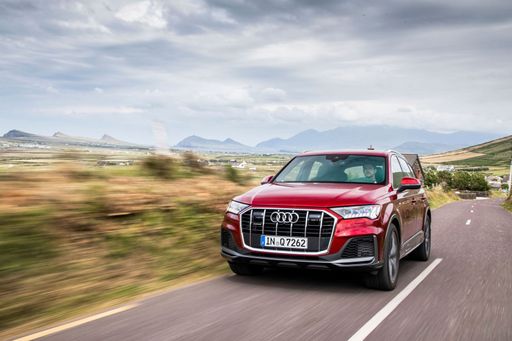 @ audi-mediacenter.com
@ audi-mediacenter.com
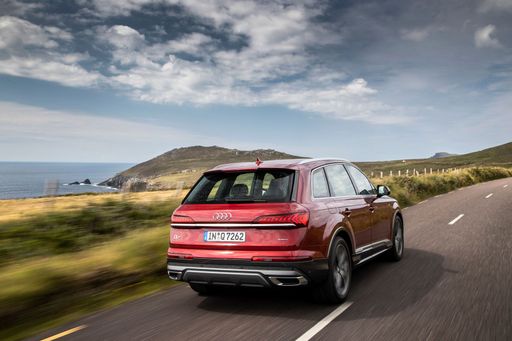 @ audi-mediacenter.com
@ audi-mediacenter.com
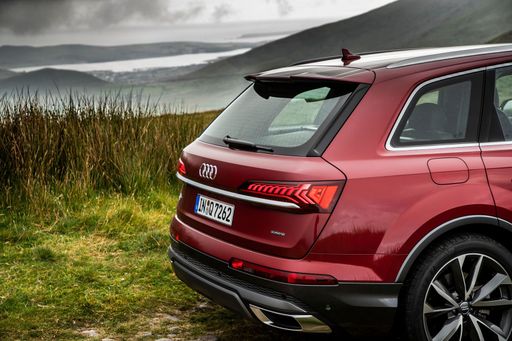 @ audi-mediacenter.com
@ audi-mediacenter.com
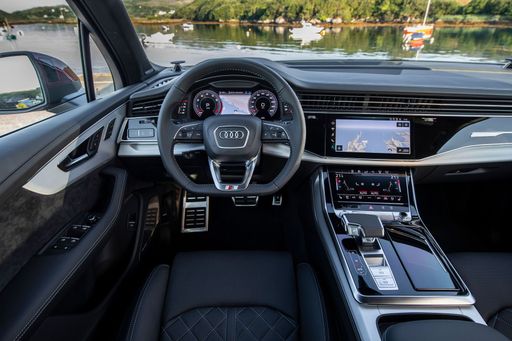 @ audi-mediacenter.com
@ audi-mediacenter.com
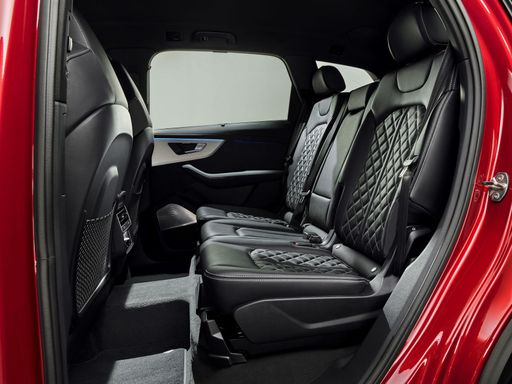 @ audi-mediacenter.com
@ audi-mediacenter.com
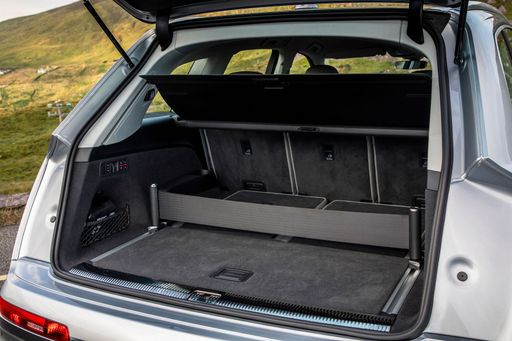 @ audi-mediacenter.com
@ audi-mediacenter.com
Volvo XC60
The Volvo XC60 strikes a perfect balance between contemporary design and practical functionality, making it an appealing choice for those in search of a reliable and stylish SUV. Its interior showcases a blend of high-quality materials and innovative technology, ensuring a comfortable and seamless driving experience. With its emphasis on safety and environmental sustainability, the XC60 continues to stand out in the competitive SUV market.
details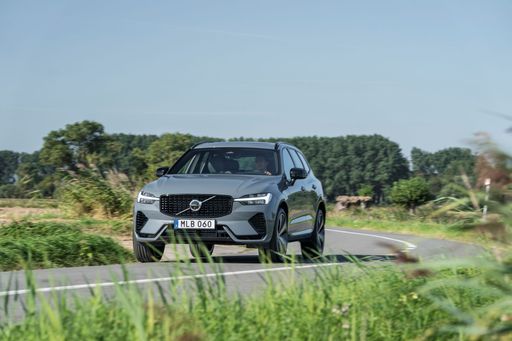 @ media.volvocars.com
@ media.volvocars.com
 @ media.volvocars.com
@ media.volvocars.com
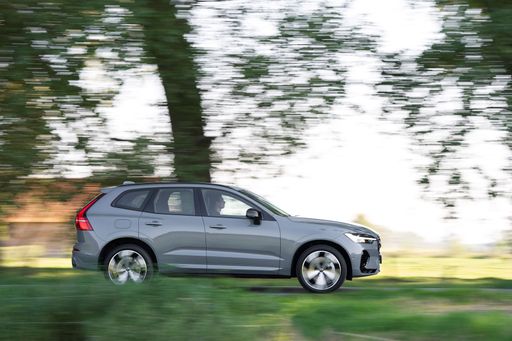 @ media.volvocars.com
@ media.volvocars.com
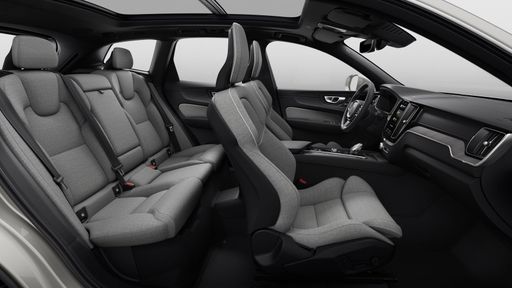 @ media.volvocars.com
@ media.volvocars.com
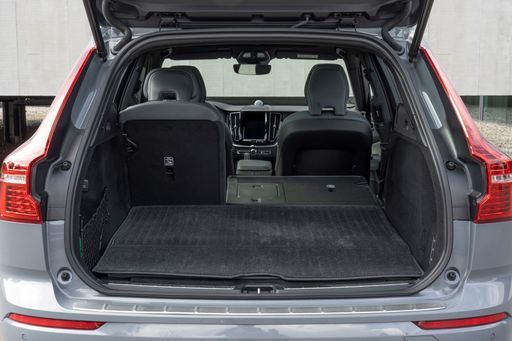 @ media.volvocars.com
@ media.volvocars.com

|

|
|
|
|
Costs and Consumption |
|
|---|---|
|
Price
69300 - 99000 £
|
Price
49200 - 75100 £
|
|
Consumption L/100km
1.2 - 11.9 L
|
Consumption L/100km
2.8 - 7.5 L
|
|
Consumption kWh/100km
-
|
Consumption kWh/100km
-
|
|
Electric Range
83 - 84 km
|
Electric Range
74 - 82 km
|
|
Battery Capacity
22 kWh
|
Battery Capacity
14.70 kWh
|
|
co2
28 - 271 g/km
|
co2
64 - 169 g/km
|
|
Fuel tank capacity
75 - 85 L
|
Fuel tank capacity
71 L
|
Dimensions and Body |
|
|---|---|
|
Body Type
SUV
|
Body Type
SUV
|
|
Seats
5 - 7
|
Seats
5
|
|
Doors
5
|
Doors
5
|
|
Curb weight
2055 - 2460 kg
|
Curb weight
1900 - 2150 kg
|
|
Trunk capacity
563 - 887 L
|
Trunk capacity
468 - 483 L
|
|
Length
5072 mm
|
Length
4708 mm
|
|
Width
1970 mm
|
Width
1902 mm
|
|
Height
1703 - 1735 mm
|
Height
1651 - 1655 mm
|
|
Max trunk capacity
1863 - 2255 L
|
Max trunk capacity
1528 - 1543 L
|
|
Payload
640 - 885 kg
|
Payload
510 - 550 kg
|
Engine and Performance |
|
|---|---|
|
Engine Type
Petrol MHEV, Plugin Hybrid, Diesel MHEV, Petrol
|
Engine Type
Petrol MHEV, Plugin Hybrid
|
|
Transmission
Automatic
|
Transmission
Automatic
|
|
Transmission Detail
Automatic Gearbox
|
Transmission Detail
Automatic Gearbox
|
|
Drive Type
All-Wheel Drive
|
Drive Type
All-Wheel Drive
|
|
Power HP
231 - 507 HP
|
Power HP
250 - 455 HP
|
|
Acceleration 0-100km/h
4.1 - 7.1 s
|
Acceleration 0-100km/h
4.9 - 6.9 s
|
|
Max Speed
226 - 250 km/h
|
Max Speed
180 km/h
|
|
Torque
500 - 770 Nm
|
Torque
350 - 709 Nm
|
|
Number of Cylinders
6 - 8
|
Number of Cylinders
4
|
|
Power kW
170 - 373 kW
|
Power kW
184 - 335 kW
|
|
Engine capacity
2967 - 3996 cm3
|
Engine capacity
1969 cm3
|
General |
|
|---|---|
|
Model Year
2025
|
Model Year
2025
|
|
CO2 Efficiency Class
G, B
|
CO2 Efficiency Class
F, B
|
|
Brand
Audi
|
Brand
Volvo
|
Is the Audi Q7 offered with different drivetrains?
Available configurations include All-Wheel Drive.
The prices and data displayed are estimates based on German list prices and may vary by country. This information is not legally binding.
